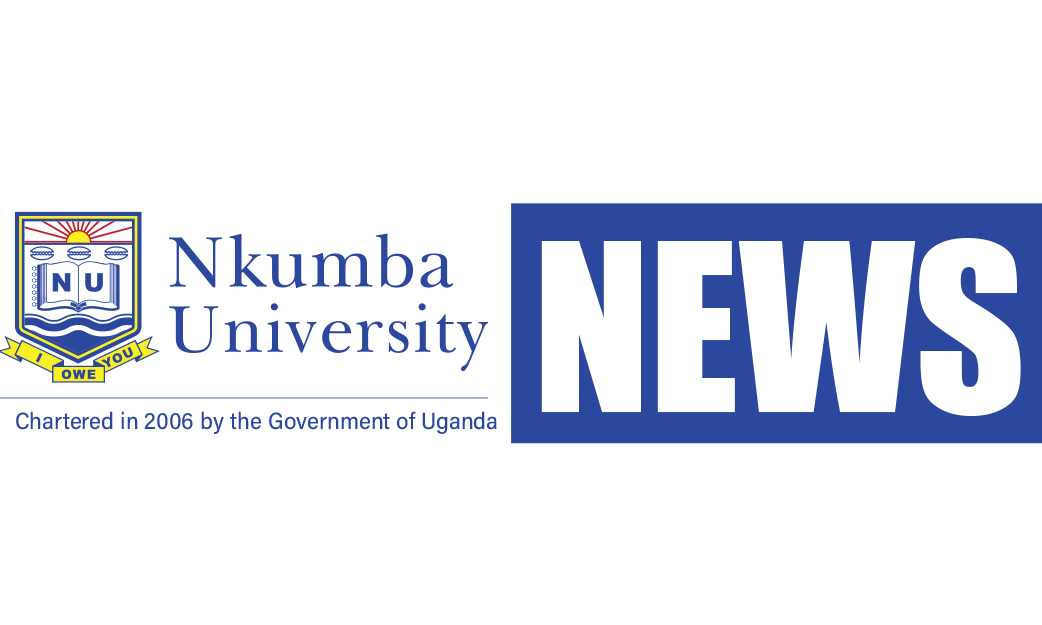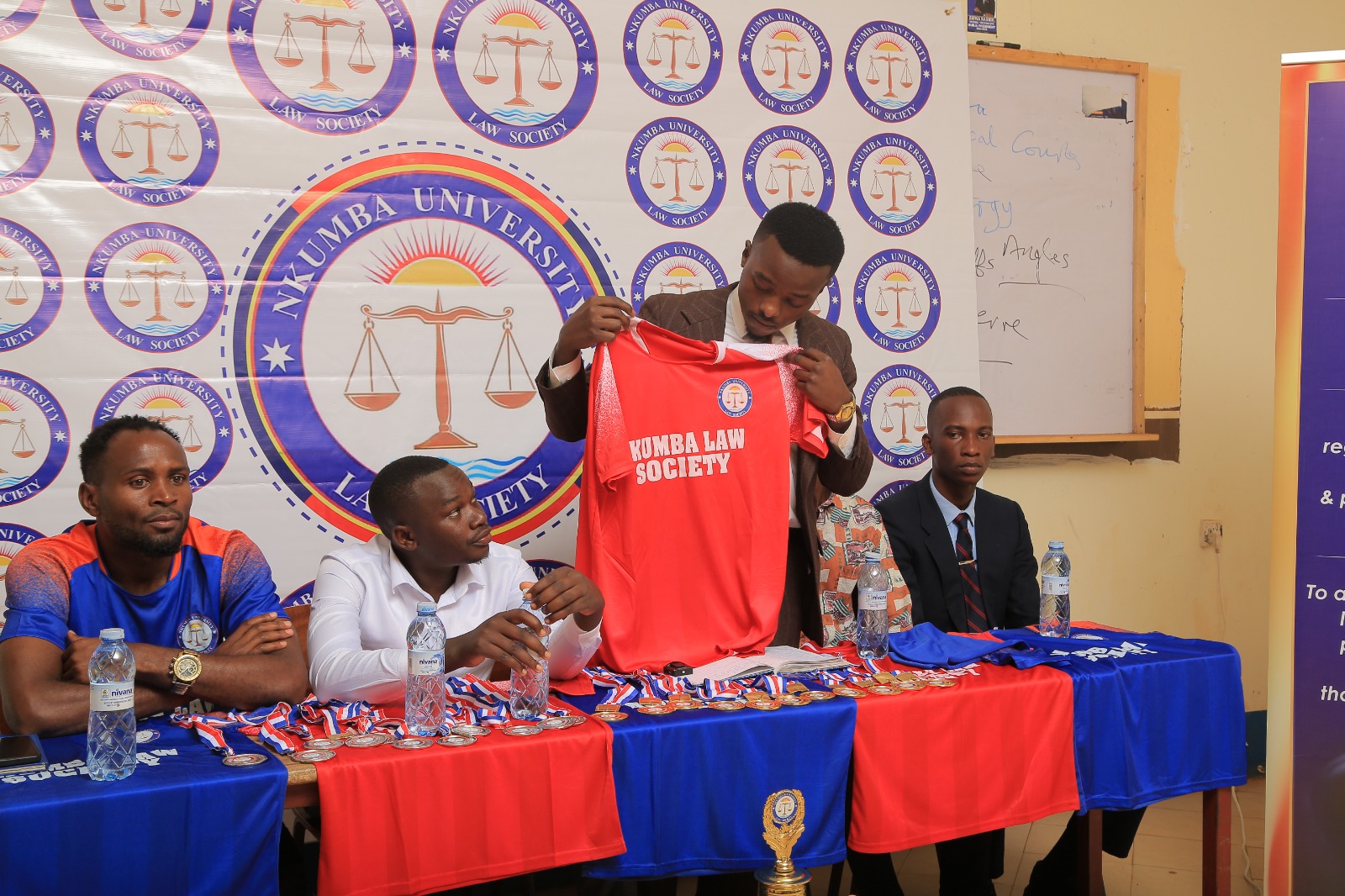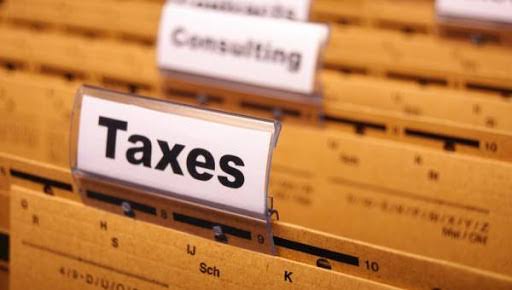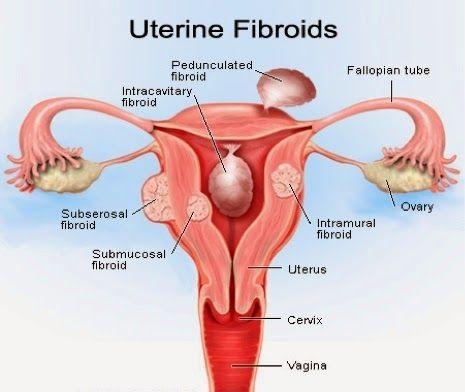Nabuuma florentina
If women are perceived as weak, why have they been chained throughout history? In actual sense if a dog is weak, why would it be chained? A weak person can give birth to kings, queens, MPs and Presidents! A cat can give birth to Lions!
Sojourner Truth (1797-1883) in her poem known as “Ain’t I A Woman?” In the second last part of the poem she said “Then that little man in black there, he says women can’t have as much rights as men, ’cause Christ wasn’t a woman! Where did your Christ come from? Where did your Christ come from? From God and a woman! Man had nothing to do with Him.”
The answer lies in the fact that women’s strength and resilience have always been a threat to patriarchal systems of power. Women’s bodies have been politicized, commodified, and controlled through chains of oppression – literal and metaphorical.
From the shackles of slavery to the bindings of foot-binding, women’s bodies have been confined and constrained. The chains of gender roles, expectations, and stereotypes have restricted women’s potential, creativity, and agency.
Historical Oppression:
Throughout history, women have faced systemic oppression that has limited their freedom and autonomy. Laws and customs have often constrained women’s roles to the domestic sphere, effectively chaining them to specific societal roles.
- Legal and Economic Restrictions: Women have been denied essential rights, such as voting, owning property, and working in many professions. These legal restrictions act as metaphorical chains, preventing women from achieving economic independence and personal growth.
- Violence and Abuse: Physical and psychological abuse are tools of control that keep women in a state of fear and submission. This abuse serves to reinforce the metaphorical chains, keeping women bound and subservient.
- Social Norms and Gender Roles: Societal expectations and gender roles have been enforced through cultural and social pressures, limiting women’s to reinforce the metaphorical chains, keeping women bound and subservient.
But women have always resisted, rebelled, and broken free from these chains. They have fought for their rights, dignity, and freedom. They have challenged the status quo, disrupted the norms, and redefined what it means to be a woman.
Confinement of Women
Examples of physical confinement:
Trobriand Islands’ “Bukbuk”: In this Papua New Guinea society, women were confined to a small hut during menstruation, forbidden from leaving or interacting with others. Foot-Binding in China (10th-20th centuries): Young girls’ feet were bound to prevent growth, causing lifelong disability and pain, to achieve the ideal of small, “lotus feet”.
Purdah in India and Pakistan_: Women were confined to their homes, often in separate quarters, and forbidden from interacting with men or leaving the house without permission.
Female Genital Mutilation (FGM): Girls and women have been subjected to FGM, often in unsanitary conditions, leading to physical and emotional trauma. Forced Veiling: Women have been forced to wear veils or burkas, restricting their Movement and autonomy, in some societies.
Convent Prisons in Europe (16th-19th centuries): Women deemed “wayward” or “disobedient” were confined in convents, forced into religious life and hard labor. Slave Plantations in the Americas (15th-19th centuries): Enslaved women were confined to plantations, subjected to inhumane conditions, and forcibly separated from their families.
Examples of metaphorical chains
Gender roles and expectations – Being expected to prioritize domestic work over career goals. Being seen as primary caregivers, limiting their ability to pursue full-time careers, being expected to be nurturing and submissive, rather than assertive and independent
Societal norms and stereotypes – Being judged for their appearance, age, or marital status, Being objectified and sexualized, rather than valued for their intellect and abilities.Being expected to conform to traditional beauty standards
Religious interpretations – Being denied leadership roles in religious institutions, Being seen as inferior or less capable than men in religious contexts, Being expected to follow certain dress codes or behaviors based on religious doctrine
Economic dependence – Relying on partners for financial support, limiting their autonomy, Facing the gender pay gap and earning less than men for the same work, Having limited access to education and job opportunities
Cultural traditions – Facing pressure to undergo FGM or forced marriage, Being expected to prioritize family honor over personal well-being, Being restricted from pursuing certain careers or hobbies due to gender norms
Internalised misogyny – Doubting their own abilities or feeling inadequate, feeling like they need to conform to gender norms to be accepted, internalizing negative messages and self-objectifying
Women Resilience and Resistance.
Women have consistently demonstrated remarkable resilience and resistance in the face of adversity, fighting for their rights, freedoms, and empowerment. Women have resiliently resisted against the chains of oppression in various ways throughout history, including:
Activism – Public speaking, protests, and advocacy against slavery, racism, and gender-based violence.
Education – Writing influential works challenging gender stereotypes and advocating for women’s rights and empowerment through education.
Political participation – Fighting for women’s suffrage, equal pay, and political representation.
Artistic expression – Using art, literature, and music to express experiences, challenge gender norms, and inspire others.
Community organizing – Building communities, unions, and organizations to support women’s rights and social justice.
Non-violent resistance – Using nonviolent methods to challenge unjust laws and social norms.
Self-care and self-love – Prioritizing self-care and self-love as a form of resistance, embracing identities, bodies, and experiences.
Sisterhood and solidarity – Forming alliances and supporting one another, creating networks of solidarity and collective action.
Challenging gender norms – Challenging traditional gender roles, stereotypes, and expectations, paving the way for greater gender equality.
Preserving cultural heritage – Preserving and passing down cultural traditions, stories, and histories, keeping communities’ identities alive.
The recent women’s movements
MeToo: Founded by Tarana Burke in 2006, the Movement gained widespread attention in 2017. The MeToo movement focuses on raising awareness about sexual harassment and assault, particularly in the workplace and has led to the downfall of several high-profile individuals accused of sexual misconduct. It also sparked a global conversation about consent, power dynamics, and accountability.
TimesUp: Launched in 2018 as a response to #MeToo, with a focus on taking action against sexual harassment and assault. It emphasizes the need for systemic change, including policy reforms and increased representation in industries. The Movement has led to the creation of the Times Up Legal Defense Fund, which provides support for survivors of sexual harassment and assault.
- BlackLivesMatter: Founded in 2013 by Alicia Garza, Opal Tometi, and Patrisse Cullors. It was originally focused on police brutality and systemic racism, but has expanded to include issues like reproductive justice and economic empowerment. The movement highlights the intersections of race, gender, class, and sexuality in the struggle for social justice
Impact on women’s rights:
- Increased awareness and visibility for survivors of sexual harassment and assault.
- Shift in the burden of proof from the survivor to the perpetrator.
- Increased accountability for those in positions of power.
- Growing recognition of the importance of intersectionality in feminist movements.
- Renewed focus on policy reforms and systemic change.
Other movements and their impacts: - NiUnaMenos (Not One Less): A Latin American movement against gender-based violence, which has led to increased awareness and policy reforms.
- MyBodyMyChoice: A movement focused on reproductive rights, which has led to increased activism and mobilization around access to safe and legal abortion.
- GirlsToo: A movement highlighting the sexual harassment and assault experienced by girls and young women.
These movements have collectively pushed the conversation around women’s rights forward, emphasizing the need for systemic change, accountability, and intersectionality. While there is still much work to be done, the impact of these movements has been significant, and their momentum continues to inspire and empower women and marginalized communities worldwide.
The Role of Law in resisting women’s oppression.
The Law has been instrumental in resisting women’s oppression through several key mechanisms:These laws and legislation create a legal framework that help to dismantle system barriers and provide recourse for women facing oppression. - Legal Protections: Laws have been enacted to protect Women from domestic violence, sexual harassment, and discrimination in various sectors, including theworkplace. Eg Domestic Violance Act, 2010 in Uganda provides comprehensive protection against domestic violence. In the case of Mifumi & Others V Attorney General & Another, the Supreme Court of Uganda declared certain aspects of property-grabbing practices, which often affect women, as unconstitutional.
The Equal opportunities Commission Act, 2007 establishes the Equal Opportunities Commission to address discrimination and promote gender equality. In Law and Advocacy for Women in Uganda V Attorney General, the laws on adultery were challenged for being discriminatory discrimination and promote gender equality. In Law and Advocacy for Women in Uganda V Attorney General, the laws on adultery were challenged for being discriminatory against women, leading to a ruling that demanded equality in the treatment of men and Women under the law.
• Equality Legislation: Gender equality laws aim to ensure that women have equal opportunities in education, employment, and other areas of society. Examples include the Equal Pay Act and Title IX in the U.S. The under Article 59, grants every citizen the right to vote, which includes women. •Case Law: While specific cases on women’s voting rights are limited, the broad constitutional guarantee in Article 59 is a cornerstone for women’s political participation.
•Voting Rights: Granting women the right to vote (e.g., the 19th Amendment in the U.s.) has empowered women to participate in the political process and advocate for their rights.
•Reproductive Rights: Laws related to reproductive rights, Such as access to contraception and abortion, provide women control over their own bodies and life choices. For example National Policy Guidelines and Service Standards for Sexual and Reproductive Health and Rights in Uganda aim to ensure comprehensive reproductive health services. In Center for Health, Human Rights and Development (CEHURD)&3 Others v Attorney General, the Constitutional Court addressed maternal health rights and the state’s obligations to provide for safe motherhood. - Example: Uganda is a signatory to (Convention CEDAW on the Elimination of All Forms of Discrimination Against Women), which provides international standards for women’s rights international treaties like CEDAW are seen in various judgments as interpretive guides, even though specific cases may not always cite them directly; they influence legal interpretations favoring gender equality.
International Treaties Documents:
CEDAW (Convention on the Elimination of All Forms of Discrimination Against Women) have global significance in promoting women’s rights and are used to pressure governments to comply with international treaties and their global impacts in combating women’s oppression: These international treaties have offered global frameworks that effectively promote gender equality and protect women from various forms of oppression. It was dopted in 1979 by the United Nations General Assembly, CEDAW is considered an international bill of rights for women. It aims to eliminate all forms of discrimination against women.
CEDAW has significantly influenced global policy reforms. Countries have incorporated its principles into their legal frameworks, leading to advancements in women’s rights, such as gender parity laws, anti-discrimination acts, and reforms in family law.
•Convention on the Elimination of AII Forms of DiscriminationAgainst Women (CEDAW): Emerging from the Fourth World Conference on Women in Beijing, this declaration sets.strategic objectives and actions for Women’s empowerment and gender equality.
It has guided global and national initiatives, leading to increased women’s participation in politics, advancements in education and health, and improved legal protections against violence and discrimination.
Beijing Declaration and Platform for Action (1995): • Overview: Adopted in 1966, ICCPR commits its parties to respect individuals’ civil and political rights without discrimination, including gender equality. The covenant has prompted countries to uphold women’s to uphold women’s rights in various spheres, including fair legal treatment, freedom from discrimination, and participation in public affairs.
• International Covenant on Civil and Political Rights (ICCPR): It was dopted in 2000, this protocol aims to protocol aims to protect children from military exploitation, which has significant implications for girls.
This treaty has been vital in addressing and combating the recruitment and use ofchild soldiers, providing rehabilitation and use of child soldiers, providing rehabilitation and reintegration programs for affected girls globally.
The women’s rights movement has made significant progress, but several challenges persist. Examples,
Gender Pay Gap: Despite progress, the pay gap between men and women remains a concern.
Sexual Harassment: Addressing sexual harassment in workplaces and public spaces is an ongoing battle.
Reproductive Rights: Ensuring access to reproductive health services and autonomy over reproductive choices is crucial.
Body Image and Eating Disorders: Societal pressure on body image continues to affect women disproportionately.
Honour Crimes and Female Genital Mutilation: These harmful practices persist in some regions.
Backlash and Backsliding: Gains in women’s rights are under attack, with trends of de-democratization emerging globally.
Leaders of the Women’s Rights Movements face various challenges, including:
Violence and Threats: Women human rights defenders face physical assaults, threats to their families, and sexual violence
Internal Conflicts, differences in opinions, strategies, and priorities within the Movement can lead to divisions and challenges in decision-making.
Limited Resources is another problem, Insufficient funding, infrastructure, and support can hinder the effectiveness of leaders and organizations.
Personal Risks, Leaders may face harassment, intimidation, and even violence for their activism, putting their safety and well-being at risk.
Burnout and Self-Care; The emotional toll of leadership and activism can lead to burnout, highlighting the need for self-care and support systems.
Representation and Inclusion, ensuring diverse representation and inclusion within leadership positions and decision-making processes.
Navigating Political Landscapes, leaders must navigate complex political environments, building alliances and advocating for policy changes.
Media Scrutiny and Misrepresentation_ Leaders may face biased or sensationalized media coverage, distorting their message and work.
Balancing Short-Term and Long-Term Goals_ Leaders must balance immediate needs and victories with long-term strategic planning and vision.
Sustaining Movement Momentum_Maintaining energy, engagement, and progress over time, despite setbacks and challenges.
Building Intergenerational Leadership through mentoring and empowering younger leaders to ensure continuity and growth of the Movement.
Acknowledging and addressing these challenges will help leaders of the Women’s Rights Movement build resilience, solidarity, and strategic partnerships to drive progress.
Celebrating Women’s Achievements_
Maya Angelou uses her autobiography to explore subjects such as identity, rape, racism, and literacy. In her book “I Know Why the Caged Bird Sings” which is the first of seven autobiographical works by Maya Angelou, published in 1969. It contains stories of her life from age 3 through age 16, including details of an unsettled and traumatic childhood, rape and racism.
Queen Elizabeth II served as head of the royal family for 70 years, making her the longest-reigning monarch in British history.
Rosa Parks famously became a leader in the 1950s Civil Rights Movement when she refused to give up her seat on the bus for a white passenger. Her bravery sparked the Montgomery Bus Boycott and was a major factor in the end of legal segregation. She continued her activism well into her later years before dying at age 92 in 2005.
Queen Nanny was the leader of the Jamaican Maroons, a community of formerly enslaved Africans who fought the British for their freedom.
The Dahomey Amazons (modern-day Benin), an all-female military regiment that fought against European colonization and had significant socio-political influence over their kingdom.
Yaa Asantewaa, queen of the Ashanti Empire (modern-day Ghana), who led her army against British troops to protect the sacred Golden Stool and her empire’s independence (c. 1840-1921). ETC
List of some of the women who have made significant contributions to Uganda’s development, including both past and current figures:
- Janet Museveni – First Lady, MP for Ruhaama, and State Minister, influencing political issues and supporting orphans.
- Maama Nabagereka Sylivour – Queen Mother of the Buganda Kingdom, promoting cultural heritage and women’s empowerment.
- Edith Mary Bataringaya – Led the Uganda Council of Women in the 1960s, advocating for women’s rights and equality.
- Joan Kakwenzire – Documented human rights abuses by the military during Museveni’s regime.
- Joyce Mpanga – Minister for Women and Development in 1987, championing women’s rights and empowerment.
- Miria Obote – First woman to run for President in Uganda’s history and widow of President Milton Obote.
- Princess Banyezaki – A prominent figure in the Buganda Kingdom, known for her advocacy for women’s rights and education.
- Winnie Byanyima – Political activist, engineer, and legislator, playing a key role in opposition politics and UN work.
- Amelia Kyambadde – Former principal private secretary to the president, controlling access and information.
- Geraldine Namirembe Bitamazire – Minister of Education, promoting free education and shaping human capital.
- Rebecca Kadaga – Speaker of the Parliament of Uganda, advocating for women’s rights and gender equality.
- Betty Amongi – Minister of Lands, Housing, and Urban Development, working to address housing and land issues.
- Judith Nabakooba – Minister of Information and Communications Technology, promoting digital transformation.
- Ruth Aceng – Minister of Health, leading the response to COVID-19 and other health initiatives.
- Betty Kamya – Minister of Kampala Capital City Authority, focusing on urban development and governance.
- Stella Nyanzi – Activist, academic, and politician, known for her advocacy on gender, sexuality, and human rights.
- Sophia Magezi – A prominent entrepreneur and businesswoman in the early 20th century, known for her innovative approaches to trade and commerce.
- Irene Magee – A pioneering educator and girls’ education advocate, who established several schools and training programs for women.
- Helen Kuyokwa – A renowned artist and cultural icon, celebrated for her contributions to Uganda’s music, dance, and theater scene.
- Dr. Margaret Wandera – A trailblazing medical doctor and public health advocate, who championed women’s health and reproductive rights.
- Dr. Specioza Wandira Kazibwe – A distinguished politician, academic, and women’s rights activist, who served as Uganda’s first female Vice President.
- Barbara Kaija – A celebrated journalist, media personality, and women’s empowerment advocate.
- Dr. Monica Musenero – A leading epidemiologist, public health expert, and COVID-19 response leader.
- Dr. Catherine Obura – A renowned entrepreneur, business leader, and women’s economic empowerment advocate.
- Dr. Phiona Mutesi – A celebrated chess champion, inspiration for the movie “Queen of Katwe,” and girls’ education advocate.
- Dr. Specioza Naigaga – A distinguished educator, academic, and women’s rights activist, recognized for her contributions to girls’ education
These women, among many others, have left an indelible mark on Uganda’s history, development, and progress. Their achievements, struggles, and legacies continue to inspire generations of women and girls, shaping a brighter future for all Ugandans.
These examples illustrate the diverse ways women have resisted oppression, challenged gender norms, and fought for their rights and empowerment. Their resilience and determination have inspired countless others to join the fight for a more just and equitable world.
Future legal and social advancements needed for true gender equality.
The standalone gender goal in the SDGs (UN Sustainable Development Goals 2030) marks a significant milestone in women’s activism, but it falls short in addressing critical aspects of gender inequality, such as care work, resource control, and violence against women. To tackle these gaps, a more comprehensive approach is necessary, one that considers the intersections of gender with other social categories like race, ethnicity, disability, and age. First, a gender analysis of each development goal is crucial to understand the gender implications and collect reliable, comparable data. Second, integrating gender sensitivity into all goals is vital due to their interdependence. Third, interventions must acknowledge the intersecting oppressions women face and accommodate their differences. Fourth, addressing gender requires engaging men and challenging relational issues. Fifth, gender work has economic benefits and enhances family well-being, making it essential to find quick wins like improving access to productive assets and childcare. Sixth, transforming gender relations requires tackling deeply rooted structural issues, necessitating nuanced, context-driven approaches with grassroots women’s participation. Finally, committing resources and funding to gender equality organizations is crucial, despite the increasing exclusion of feminist voices in international negotiations. Implementing gender-sensitive approaches remains challenging, especially in societies where feminist politics are seen as regressive. Despite backlash and threats, successful interventions have transformed women’s lives worldwide, emphasizing the need for continued efforts. Other future advancements needed for gender equality include constitutional gender equality provisions, comprehensive anti-discrimination laws, reproductive rights, equal pay legislation, gender-balanced representation, addressing intersectionality, protection from gender-based violence, care work recognition, education and awareness, and empowering women in leadership.
Conclusion
In conclusion, the perception of women as weak is a myth perpetuated by patriarchal systems of power to maintain control and oppression, though struggle for women’s rights and gender equality continues, despite progress made. Challenges persist, and future legal and social advancements are necessary to achieve true gender equality. Key areas for improvement include constitutional provisions, anti-discrimination laws, reproductive rights, equal pay, gender-balanced representation, and protection from gender-based violence. Lessons from women’s experiences, can help us build a more just and equitable future for all and by doing so, we can create a world where women can reach their full potential, free from the chains of oppression, and build a brighter future for all.
BIBLIOGRAPHY
1995 Constitution of Uganda
Ain’t I A Woman? By Sojourner Truth.
www.amnesty.org
www.rescue.org
WRITTEN BY: NABUUMA FLORENTINA.
NKUMBA UNIVERSITY SCHOOL OF LAW.
EMAIL: florentinanabuuma8@gmail.com





















Discussion about this post